NSF Research Traineeship (NRT) 2016-17
Students participated in a one semester course consisting of three one month long modules, entitled "Methods In Data Enabled Research Into Human Behavior And Its Cognitive And Neural Mechanisms". The modular course provided an innovative solution to the problem of providing cross training while not overburdening trainees with additional coursework. Each module immediately engaged students in hands-on experience with tools and methods of computer or cognitive science. We developed a set of modules over the course of the NRT, rotating some of the modules in and out each year. This year's modules were:
- Deep learning taught by Professor Henry Kautz. This module introduced students to deep learning, that is, the use of multilayer artificial neural networks, with applications to perception and natural language processing. The use of advanced toolkits such as Theano and Caffe made it possible for students to progress in just four weeks from basic theory to building deep learning systems that solved challenging problems in image and text classification.
- Methods in psycholinguistics taught by Professor Florian Jaeger. This module provides a hands-on tutorial in experimental techniques for inferring human mental processing from
fine grained measurement of responses to auditory or visual stimuli in the laboratory. Methods include eye tracking, speech perception experiments, acuity tests, and iterated artificial language learning. In the last week of the module, students used these methods to test hypotheses about how word choice is realized in language production. - Computer vision taught by Professor Jiebo Luo. Students learned core concepts in computer vision through a series of hands-on exercises, from basic image processing to deep learning methods, culminating in the creation of a system for generating English language captions for arbitrary images.
The following semester, the students participated in "Practicum In Data Enabled Research Into Human Behavior And Its Cognitive And Neural Mechanisms". In this course, trainees worked in mixed teams of computer science and brain and cognitive sciences
2016-17 Practicum Projects
Multimodal Speech Recognition
Our goal is to improve speech recognition by using video as well as audio. A lot of speech recognition software relies solely on auditory processing, yet humans may use additional cues to aid their understanding - context, lip-reading, demographic information.
We are hoping to make a neural network model that takes advantage of these additional sources of information.
We will compare model performance to human performance and identify what kinds of video features are most useful for improving speech recognition in both our model and humans. We are not aware of any previous academic work that specifically investigates the usefulness of demographic information paired with audio-visual speech recognition.
Furthermore, while some areas of psycholinguistics have investigated the influence of demographic information such as
Diagnosis of Aphasic Patients
Aphasia is a condition resulting from brain damage that can cause difficulty in the production or comprehension of speech. There are several different subtypes of aphasia, including Broca’s aphasia (which involves difficulty in the production of speech but relatively intact comprehension), and Wernicke’s aphasia (which involves relatively fluent speech but difficulty with comprehension). We propose to design a computer model that can classify aphasic speech in the auditory and text domains.
Research question: What are the fundamental patterns present in
Bios of the 2016-17 Class Members
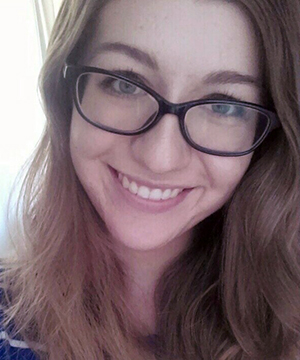 | Wednesday BushongI'm a second year Website: https://wbushong.github.io/ Project contributions: Our group of brain and cognitive sciences and computer science students investigated whether introducing visual information about the face aids in speech perception in humans and neural networks. I contributed to the experimental side, designing and running experiments to test how visual information changes speech perception in humans and comparing this to how visual information aided speech perception in neural networks. What did I learn from the course? The biggest takeaway for me was the ability to collaborate, especially with people who have very different skillsets. How might this course affect my career? As I mentioned, I felt that teamwork and collaboration skills were the main benefits of the course and they will have a very positive impact on my career as I collaborate more and more with researchers outside of my subfield. The computational skills I learned from the first part of the course are also applicable to my research and to current industry standards if I decide to leave academia.
UPDATE June 2020: Wednesday Bushong completed her PhD and will be starting a tenure-track faculty position at University of Hartford as an Assistant Professor of Psychology. |
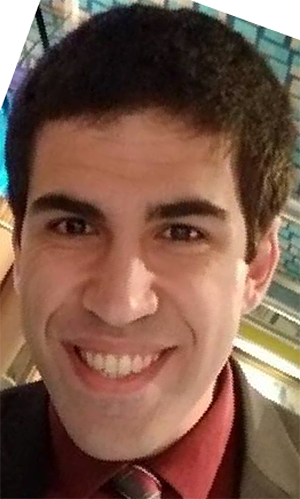 | Benjamin ChernoffBen is a second year brain and cognitive sciences Current CV Project contributions: I was the project manager for my group- Diagnosis of Aphasia, Rochester. I helped come up with the original idea for the project and was able to help frame the question based on my background in aphasia. I also acquired access to the database of patients we used, and I built the website for our project. What did I learn from the course? I learned important fundamental concepts of machine learning, ways that those concepts have been implemented in cognitive science generally, and how to use programming to implement them in my own research. How might this course affect my career? Machine learning is an emerging tool in my field and within neuroimaging in general. This course furthered my career by introducing machine learning concepts in a way that I can apply to my own research. This increases my skillset as a researcher, which will help create opportunities for me after graduation. Conferences since the class ended: Annual Meeting of the Cognitive Neuroscience Society, 2018 |
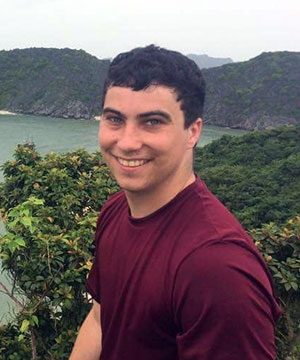 | Sam CheyetteI graduated from Carnegie Mellon in 2016 with a B.S. in cognitive science. I'm now a brain and cognitive sciences Project contributions: I was involved in numerous projects, but my favorite was probably developing a tool to integrate speech with lip-reading. At first, I was involved in developing the tool (a deep recurrent neural network), but my primary focus became figuring out how well non-deaf people can integrate speech with lip-reading. What I learned: On a "factual" level, I learned a lot of How it might affect my career: Many of the machine learning tools that I learned in this class are widely used or becoming widely used in my field. Having some experience with those tools will certainly be useful. Greatest challenge: Working with many other people towards an ambitious goal can be frustrating (and rewarding). It's tough trying to keep everyone in a team on the same page and motivated toward a common purpose. Update Since Traineeship: Sam is finishing his |
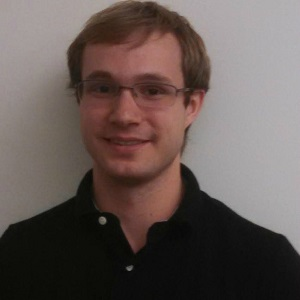 | Brian DickinsonI am a Project Contribution: Our group's project focused on separately comparing how humans and our trained artificial neural networks used visual and audio information in speech perception. One subgroup ran experiments on how well people could understand speech with and without visual cues while the other group focused on training a neural network to perform the same task. In particular, I designed and trained a neural network which extracted demographic data such as age, gender, and race from the speaker videos.
What did I learn from this course? / What was surprising or the greatest challenge? My biggest takeaway and greatest challenge was cross-disciplinary group collaboration. This was the first time I worked on a large project where no one person fully understood every component of the project. It was an excellent exercise in giving clear, concise descriptions of the parts of your work that everyone needed to understand.
How might this course affect my career? The most immediate impact for me was having worked on a practical project using neural networks rather than simply working on classwork examples. This is immediately useful because interviewers are far more interested in you if you can apply what you know to real-world problems and data sets. |
 | Weilun DingWeilun Ding is an MS student in data science with a concentration in brain and cognitive sciences at the University of Rochester. He is at the stage of preparing for a |
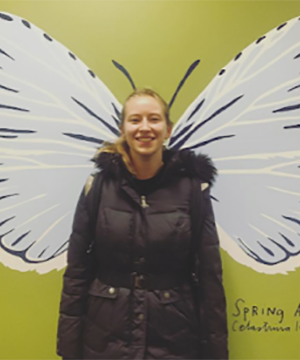 | Natalia GalantNatalia Galant is an MS in data science. Her undergraduate degree and past research experience were in neuroscience. She is interested in integrating these two fields in an interdisciplinary way. Updates since training: Natalia is a Quantitative Strategist working for Variant Perception. |
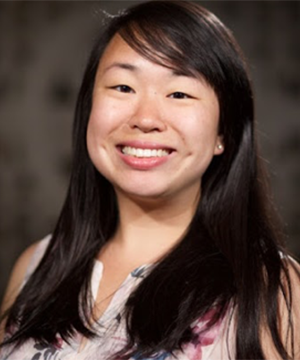 | Carol JewCarol Jew is a Email: carol.jew@rochester.edu Project contributions: My main contribution to my group's project, Diagnostic of Aphasic Patients, Rochester (DOAP ROC) was cleaning and parsing the transcriptions of the video recordings of the participants’ performance on the diagnostic evaluations and labeling each word in an utterance according to its part of speech. We then compared the utterances produced by participants with aphasia and those produced by control participants and looked for differences that characterized speech production across the two groups. We also passed these features along to our teammates for use in training and testing aphasia classification models. What did I learn from the course? I was introduced to Theano and how to use it to build neural networks. I learned a great deal about neural networks and how to apply them to different research areas. I learned about what questions an industry finds interesting vs what questions an academic lab finds interesting. I learned how to work with a team to develop a project from its inception to its presentation to a public audience. How might this course affect my career? I learned how my background as a cognitive scientist can be leveraged to transition into a career in data science. What was surprising or the greatest challenge? The greatest challenge was to figure out how to keep everyone involved and focused on the main research question at hand. While we each wanted to work on individual aspects of DOAP ROC that interested us the most, we had to remain a cohesive unit that worked interactively. |
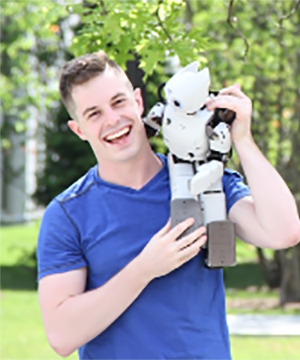 | Nathan KentNathan Kent is a second year Website What did I learn from the course? The things I found to be the most interesting were the subtle differences between doing research as a student in brain and cognitive sciences and doing research as a student in computer science. The final project was an interesting exercise in crossing that gap. How might this course affect my career? This course provided me with the opportunity to make contacts in another department that I may not have made otherwise. Hopefully, I will be able to use this experience to work with the BCS department in the future. What was surprising or the greatest challenge? The writing workshops. The difference between the workshops in the first year and the second year seemed like night and day. I did not expect them to be as useful and interesting as they were. Updates: Since the class ended, I have attended the Epirob 2017 and RSS 2018 conferences. |
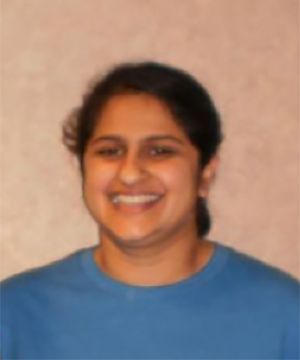 | Priyanka MehtaPriyanka Mehta is a first year Update Since Traineeship: Priyanka is finishing her |
 | Parker RileyParker is a first-year computer science Project Contributions: Parker primarily worked on the face detection and facial feature extraction components. What I learned: "This course was an excellent way to form interdisciplinary connections and get a broader perspective on research in the field." Career impact: "With the recent boom in deep learning, getting familiar with it early on in the program is an excellent way to be set up for success after graduation." Surprise/challenge: "I was most surprised to see how much work there is happening in other fields that can be applied to my own; we need programs like this to increase cross-disciplinary communication." Updates since participation: I attended ACL 2017, presented published work at ACL 2018 (both trips with support from the NRT), and interned at Google in New York City. |
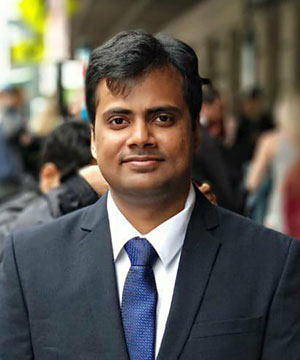 | Sudhanshu SrivastavaSudhanshu is a first year MS student in computer science. His research interest was Human and Computer Vision. His undergrad degree was in mathematics. Website Project Contributions: Our team worked on Automated Diagnosis of Aphasic Patients using Deep Learning. I implemented multiple Convolutional Neural Networks and LSTM models as well as tuned the hyperparameters for these. What did I learn from the course: In the first semester, I learned the basics of Deep Learning and then I learned its applications to computer vision and language. I also learned the basics of psycholinguistics, Bayesian Inference and how these are used in cognitive science research and crowdsourcing through mechanical How might this affect my career: The NRT already immensely helped my career. I had an interest in both artificial intelligence and neuroscience and I had little background in either before joining. This fall I begin a What was surprising or the greatest challenge: I was pleasantly surprised to find that Bayesian Inference has an active application in cognitive science. Updates since the class ended:
|
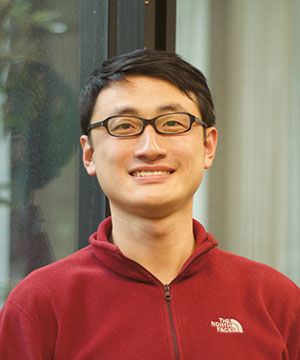 |
|
